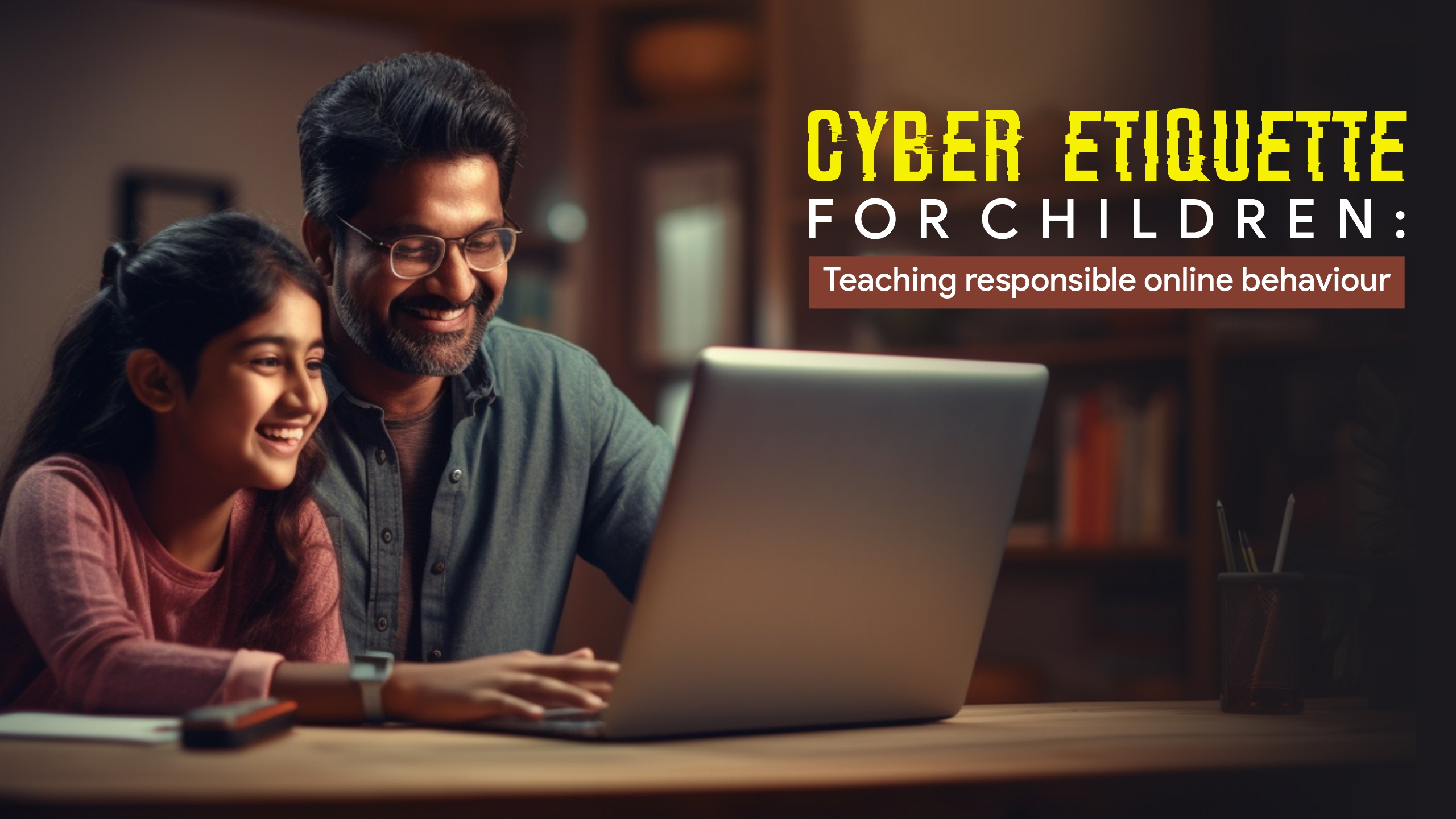In today’s digital age, children are growing up immersed in technology, making it essential for them to understand cyber etiquette, which defines the principles of responsible online behaviour. For parents in India, guiding children to navigate the internet safely and respectfully is essential for their overall development and online safety.
The Importance of Cyber Etiquette
Teaching children proper online manners is akin to instilling traditional etiquette. It involves understanding the impact of one’s actions in the digital world and fostering a sense of responsibility. A study by the Office for National Statistics revealed that 92.6% of children aged 10 to 15 in England and Wales used the internet daily or almost daily, highlighting the pervasive nature of online interactions.
Key Aspects of Responsible Online Behaviour (examples)
- Respecting Privacy: Children should be taught to protect personal information and respect others’ privacy. Sharing personal details or images online without consent can lead to serious consequences.
- Mindful Communication: Encouraging children to think before they post or comment helps prevent misunderstandings and conflicts. They should be aware that their digital footprint has lasting impacts.
- Avoiding Cyberbullying: Educate children about the harm caused by cyberbullying and encourage them to stand against it, whether as bystanders or victims. Open discussions about empathy and kindness are vital.
- Critical Evaluation of Content: Helping children foster critical thinking skills to distinguish between reliable sources and misinformation will, in turn, enable them to assess the credibility of online information effectively.
Practical Steps for Parents (examples)
- Open Dialogue: Maintain regular conversations about online experiences, encouraging children to share both positive and negative encounters. This openness builds trust and allows for timely guidance.
Creating a safe and open environment where children feel comfortable discussing their digital experiences is crucial. Encouraging regular conversations about online safety helps children make informed decisions and seek guidance when needed.
Example: If a child comes across an upsetting video or message online, having an open dialogue allows parents to explain its context, address any concerns, and teach them how to report or avoid such content in the future.
- Setting Boundaries: Establish clear rules for screen time and appropriate internet usage. Consistent guidelines help children understand expectations and the importance of digital balance.
Monitoring screen time and setting clear guidelines for internet usage further strengthen a child’s understanding of safe online practices. This also helps them develop self-discipline and a balanced approach to digital engagement.
Example: Setting a rule that devices should not be used during meals or after bedtime ensures children develop healthy screen habits while also prioritising family time and sleep.
- Role Modelling: Demonstrate responsible internet use. Children often emulate adults; showcasing good cyber etiquette reinforces its significance.
Leading by example is equally important. When children see responsible digital behaviour in daily life, they are more likely to adopt the same habits. Parents should discuss the impact of cyberbullying and guide children on how to respect privacy online.
Example: If parents avoid oversharing personal information online and fact-check news before believing or sharing it, children will learn to be more mindful about their digital footprint.
- Educational Resources: Utilise digital learning platforms and tools designed to teach online safety for children and digital citizenship. Engaging with interactive content can make learning about cyber etiquette
By actively participating in their child’s digital journey, parents can help instil a sense of responsibility, kindness, and awareness, ensuring they navigate the online world safely and thoughtfully.
Example: Encouraging children to use educational apps like ‘Be Internet Awesome’ by Google or ‘BBC Own It’ helps them learn about online safety in an engaging and age-appropriate manner.
In India, the rapid integration of technology in education and daily life presents unique challenges. A study highlighted that children are increasingly exposed to online risks, including contact with strangers and exposure to inappropriate content. This underscores the need for culturally relevant education on internet safety.
Instilling cyber etiquette in children is an ongoing process that requires patience, understanding, and active participation from parents and educators. By fostering a respectful and safe online environment, children gain the confidence to navigate the digital world responsibly.
At Narayana Schools, we are committed to supporting parents and students in this endeavour, ensuring that every child’s dream is nurtured in a secure and encouraging learning environment because your dreams are our dreams.

Very Good Content … As a parent, i don’t frequently open this app so I suggest this to be posted in parents and teachers whatsapp groups across your schools for more reach. Also, please note that majority of your students parents are true middle class of Bharat with high aspirations about children but less knowledgeable about all this. So, please ensure such a good content is reached and conveyed in regional languages as well to have more reach. Huge responsibility on your shoulders.
Nice